
12 minute read
Easter Crafts A bank holiday weekend
Bake a cake
A delicious and beautiful cake for those who’ve worked hard in their garden and deserve a treat. It’s also free from refined sugar if you use maple syrup and coconut sugar. Our preference is to use honey in the icing. Fresh blueberries also make a lovely decoration if you don’t have flowers to hand.
Ingredients
120g finely grated, peeled, trimmed parsnip 120g finely grated, peeled, trimmed carrot 120g peeled, cored and grated eating apple 50g pecans or walnuts, chopped 150ml mild oil such as rapeseed, sunflower or vegetable 100g coconut sugar or soft brown sugar 100ml maple syrup 4 eggs 1 teaspoon vanilla extract 2 tablespoons orange juice 250g wholegrain stoneground spelt flour 4 level teaspoons baking powder
For the icing
175g slightly softened butter 225g full fat cream cheese 3–5 tablespoons mildly flavoured runny honey or maple syrup
To decorate
Herbs and edible flowers such as viola, primrose, borage, nigella, mint, rosemary, nasturtiums, or fresh blueberries.
Method
Preheat the oven to 170°C/150°C fan/gas mark 3. Grate the vegetables and apple and mix together, with the nuts, in a bowl. Put the oil, sugar, maple syrup, eggs, vanilla and orange juice into a mixing bowl and whisk well for a minute or so. Fold in the grated vegetables, apple and nuts. Sieve over the flour (return the grainy bits to the bowl once sieved), two pinches of salt and the baking powder. Fold in until just combined. Spoon into a greased and lined, deep, loose-bottomed 20cm cake tin. Bake for one hour or until cooked through. Remove from the oven and cool. Whisk the butter and cream cheese until smooth then add honey or maple syrup to taste. Slice the cake horizontally then sandwich the layers with a heaped tablespoon of icing. Smooth the remaining icing over the top and sides. Chill for ten minutes, then decorate.
Adapted from: The Little Grower’s Cookbook by Ghillie James & Julia Parker. Photography by Ali Allen. Lettuce Publishing, £20.

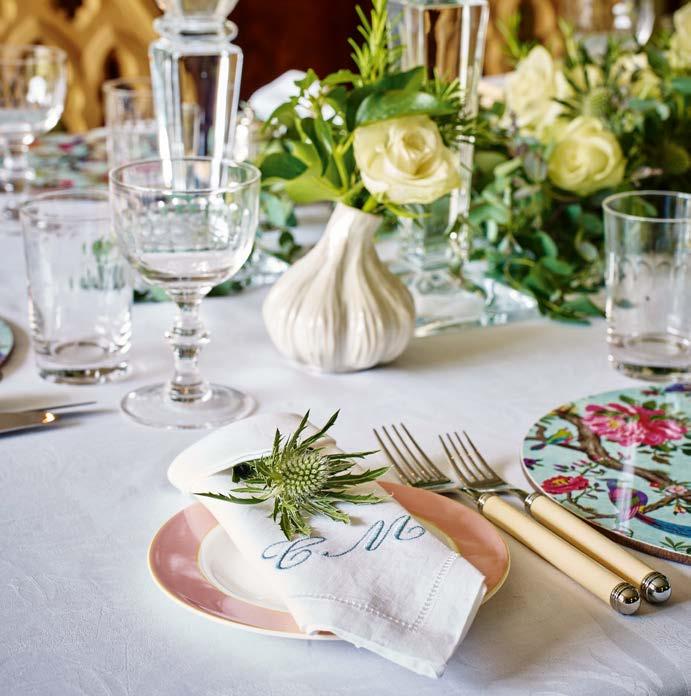
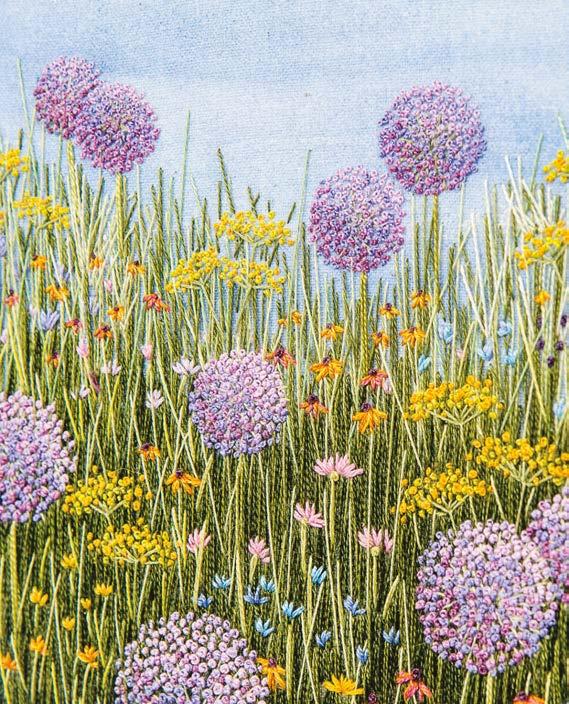
Lay a table
No matter what the size of the party or whether you’re eating inside or out, every meal is improved by a properly laid table. Use your best linen for a change and the china that’s usually reserved for special occasions. Or, if your regular napkins and tablecloths are somewhat worse for wear, replace them. You’ll find that eBay is an excellent source of vintage embroidered Madeira linen, but consider too, Club Matters (right), Cologne & Cotton, OKA, Summerill & Bishop and, for block prints, The Cloth House and Molly Mahon. East London Cloth offers a small, quality selection of linen tablecloths with pleated edgings and cushions to match, as well as bespoke items. Bring the garden to the table, with boughs of blossom in a vase or a sprig or two or rosemary placed on a napkin. Try bright, multicoloured vases, candlesticks and candles from Ibbi Home.
Make an arrangement
To ring the changes and set a seasonal mood, make a table arrangement of spring flowers. Supermarkets are an excellent source of inexpensive prepared bulbs, particularly hyacinths and narcissus, while you should try garden centres for cheering primroses. Remove flowers from their plastic tubs and plant them directly in an attractive container. Anything will do: try a pretty china tureen or a crystal salad bowl for good effect, or use terracotta pots or an enamel bucket for a wholesome, rustic look. Keep colours similar for the best overall effect, especially on hyacinths. You won’t need extra soil for this, but covering the surface with moss lifted from the lawn will make a neat finish. Cotswold florist Willow Crossley specialises in intensely seasonal, looser, wild arrangements and offers online tutorials.
Try out needlework
Craft shops have reported a surge in sales of needlework supplies and it’s easy to see why. This relaxing pastime is both completely absorbing and immensely satisfying, as many will say they have always known. Fine, embroidered clothes featured heavily in the recent Netflix series Bridgerton, and there are even tutorials on TikTok. Jo Butcher (above) sells embroidery kits online and also offers classes. Her work has a buoyant botanical mood. Look too, to Jo Saunders, whose bold, bright designs have been lauded by the likes of Jigsaw and Barbour. Try also The Crewelwork Company, Ornamental Embroidery and Sarah Dennis Embroidery. If the mood takes you, consider a class with the Royal School of Needlework, which was founded in 1872.
The perfect selection of tools and kit for gardeners

myWindowbox ...bringing the garden to your window myWindowbox ...bringing the garden to your window myWindowbox ...bringing the garden to your window
VICTORIAN WINDOW BOXES

www.tinkerandfix.co.uk

CAST ALUMINIUM WINDOW BOXES • STEEL WINDOW BOXES GEORGIAN WINDOW BOXES CAST ALUMINIUM WINDOW BOXES • STEEL WINDOW BOXES GALVANISED STEEL AND FIBREGLASS WINDOW BOXES CAST ALUMINIUM WINDOW BOXES • STEEL WINDOW BOXES GALVANISED STEEL AND FIBREGLASS WINDOW BOXES GALVANISED STEEL AND FIBREGLASS WINDOW BOXES Tel: 07729 634239 Tel: 07729 634239 Tel: 07729 634239 sales@mywindowbox.com sales@mywindowbox.com sales@mywindowbox.com www.mywindowbox.com www.mywindowbox.com www.mywindowbox.com


www.alexiapeck.com
Alexia Peck’s candle and paperweight, Weekend. As the week comes to a close, it’s time to unwind and light a candle to celebrate the beginning of your weekend with Alexia Peck’s new candle and paperweight ‘Weekend’. A beautiful floral tea scent opening with sparkling top notes of orange blossom with a heart of osmanthus, honeysuckle and jasmine is softened gently by fruity accords of cassis and nectarine. With this floral essence of tranquility you can be sure that your home will see you into a restful weekend...
Dye botanical eggs
Decorating eggs at Easter is a popular tradition: they are fun to make and an attractive addition to a seasonal display. Prepare them by making a small hole at each end of the egg with a needle and then blowing out the contents before decorating. Once treated this way, the eggshells will last well if wrapped in tissue paper and stored carefully in egg boxes. It’s also fun to colour eggs with vegetable dyes. Place a square of muslin on a flat surface. Lay a pretty leaf in the centre, then put an egg on top. Gather the fabric around the egg and secure well. Boil the wrapped eggs with plenty of onion skins for a brown colour or red cabbage for blue, for around 15 minutes. Remove the eggs and while they are still hot, peel off the leaves – they can stick if left to dry on the eggs. Store the eggs in the fridge if you’re planning to eat them, otherwise use them for a few days’ display only.



Make a tied bunch
It is a joy to receive and to give flowers, especially when they have come from the garden. Knowing a few florist’s techniques can prove immensely useful. In Vintage Flowers (Kyle Books) Vic Brotherson of Scarlet & Violet offers a wealth of inspiration on arrangements and unusual containers to use as vases. To make a tied bunch as you would receive from a florist, lay out partially opened flowers in rounded shapes as well as lighter flowers and foliage for ‘fillers’. Pick a main flower and hold it in your flat left hand. Using your right hand, add more flowers and foliage, holding the stems in your left hand secure with your thumb and forefinger. The other fingers “grip and release as more flowers are added,” Vic explains. Turn the bunch with your right hand and as you progress you should develop the classic florists’ twist of stems. Lower the height of the stems as you go for a rounded form.
Attend a lecture
It’s a long time since a crowd has filled an auditorium, but now we have the online lecture. Where once we were constrained by geography, it’s now possible to listen to talks by experts in their field from around the world, without so much as removing your slippers. Philippa Burroughs presents for the National Garden Scheme a talk on tulips at Ulting Wick, her Essex garden, on 30 March at 7pm. See ngs.org.uk for details. Other sources are Gresham College, The Kew Mutual Improvement Society, the Linnean Society and the Garden Museum.
Keep a nature diary
The Natural History of Selborne by Gilbert White was first published in 1789 and remains one of the most important pieces of English nature writing to date. Most of us give up on journalling after just a few weeks but keeping to some simple parameters can help sustain it. Instead of writing down everything, record just three things in the briefest form: the weather, what you saw or heard, and how you felt. Illustrator Anna Koska provides a joyful and inspirational record of a year in her West Country life in From Field & Forest (Pavilion).

Spruce up the shed

Fine weather is the clarion call to shed owners everywhere. Now is the time to sweep it, paint it, repair it, replace it and tidy it. Brush out and wash pots then stack them in size order so they’re ready and waiting for new inhabitants. Check garden tools to see they’re in good repair. Take lawnmowers for a service if necessary and clean hand tools, removing rust with steel wool and WD-40. This might also be the year you re-cover the deckchairs: The Stripes Company has a large, colourful collection of fabrics, while Ian Mankin offers Lancashire-woven canvas in nautical hues. If you anticipate spending more time in the shed, add a mood board to guide your seed-sowing thoughts throughout the year.
Revisit your favourite books
There is nothing quite like pulling down a book and remembering why you liked it so much. Similarly, now might be the time to add to your library. World of Books is an excellent online source of popular second-hand titles and books that may be out of print. Stock changes constantly. For rare and special editions, try Peter Harrington. This month, several titles are reissued revised and expanded: Head Gardeners by Ambra Edwards (Pimpernel), New Wild Garden by Ian Hodgson (Frances Lincoln) and Hummelo: A journey through a Plantsman’s Life by Piet Oudolf and Noel Kingsbury (Monacelli).
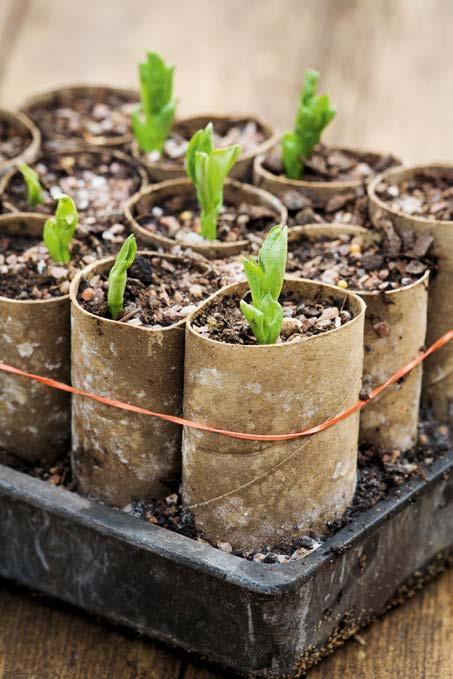
Build a bug hotel
There are plenty of bug hotels for sale but a homemade one will accommodate garden wildlife just as well, if not better. Dave Goulson (see Q&A on page 123) sets out how to make one in his new book, Gardening for Bumblebees. The simplest means is to pack hollow bamboo canes into several empty tin cans. Lay these horizontally on top of a small wood pile or a stack of bricks against a garden or shed wall and position to avoid flooding. Keep the canes at varying lengths so insects can crawl over the hotel and inspect their new lodgings easily. Provide insects with food sources as well: this spring, try mowing the lawns less frequently and let buttercups, clover and dandelions flower. These are a critical early food source for pollinators that have just come out of hibernation.
Sow seed
The golden rule of seed-sowing is to do so little and often. Succession sowing however, is trickier to master and requires an attentiveness for which few have time. Instead of trying it with everything you’ll grow, pick just a few items of which you know you will use plenty. Salad leaves are ideal to begin with, but you could also try two or three batches of sweet peas to keep the run going from spring (from a sowing last year) to the first frosts. Where possible, avoid buying plastic trays: toilet roll cores work well, as do newspaper pots. Plastic Free Gardening and Anything But Plastic sell reusable rubber seed trays.


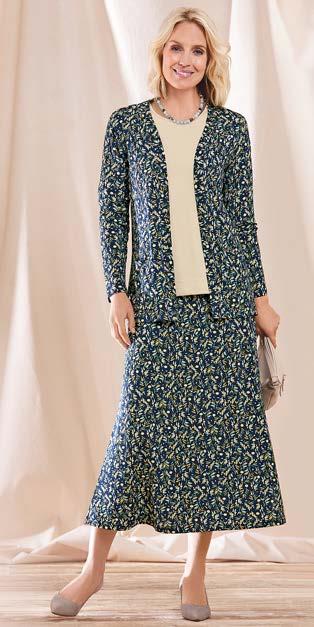


International Garden Photographer of the Year
In association with The English Garden, this annual competition seeks the best images of plants, gardens and landscapes from around the world
The winner of International Garden Photographer of the Year is Robin Williams of Melbourne, Australia, for his image of a white lotus flowerhead, which also won the Beauty of Plants category of the competition. Robin’s image of the Nelumbo nucifera bloom was taken in the Blue Lotus Water Gardens of Yarra Junction, Victoria. Lotus are aquatic perennials that have the ability to use thermo-regulation, self-heating their flowers to aid fertilisation by bees, flies and beetles. Robin is an internationally recognised photographer whose career, particularly in the fields of medical photography and photographic education, spans four decades. He moved to Australia from the UK in 1992.
“Robin has used macro photography to immortalise the culturally iconic and ancient lotus species. The composition, intention and novelty invite us in with a delicious allure and promise of sensory satisfaction. Like the countless tiny creatures that are drawn onto its warm golden facade, we cannot help but stop, stare and absorb the sense of potential delight, as if caught outside the window of the world’s finest patisserie,” says IGPOTY’s managing director Tyrone McGlinchey.
“I am absolutely thrilled to be named ‘International Garden Photographer of the Year 2020’ – I am always inspired by the beautiful work submitted by photographers all over the world and humbled to think that my work can stand shoulder-to-shoulder with theirs,” says Robin. “We all celebrate the beauty of the natural world and, in doing so, hope to protect it.”
Ten winning images from IGPOTY’s 14th Competition are featured here, but all the winning images will be available to view on the IGPOTY website from 6 February. The exhibition is then set to tour the country, going on display at venues such as UNESCO World Heritage Site Blenheim Palace and Herrenhausen Gardens in Germany, but this will depend on local and national restrictions. Please visit igpoty.com where you can also find out how to enter Competition 15.
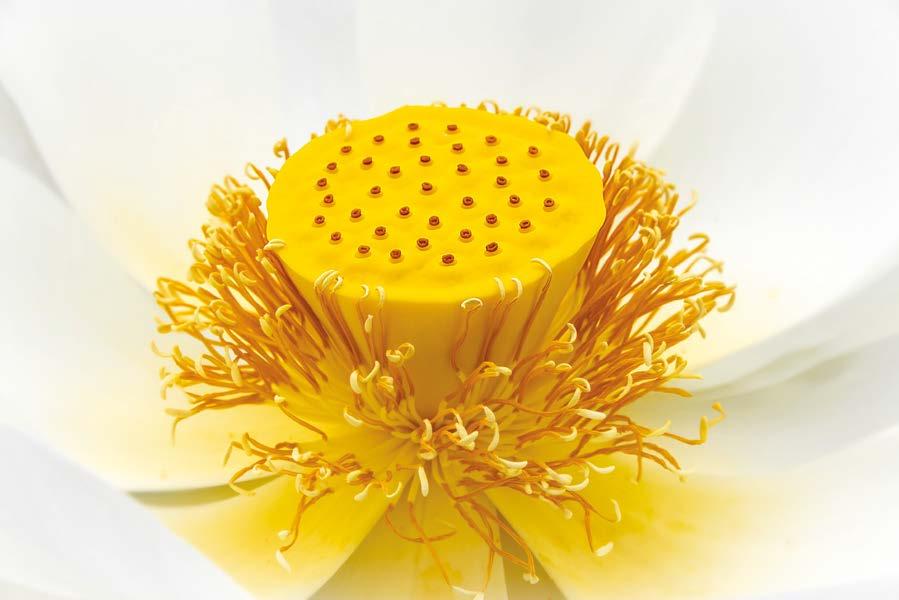
WINNER The Beauty of Plants Robin Williams
Creation
Victoria, Australia
“I captured this macro shot of the golden reproductive parts of a Nelumbo nucifera (white lotus) flowerhead, which was ready for pollination. The sacred lotus is a rhizomatous aquatic perennial and is a ‘living fossil’ dating to pre-history, having been domesticated in Asia about 7,000 years ago.”










